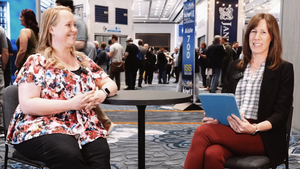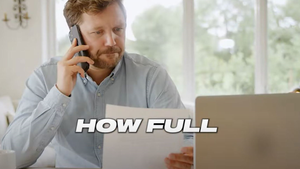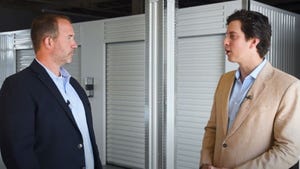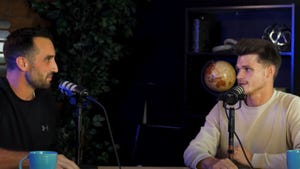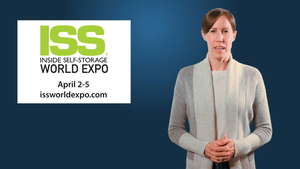November 1, 1998
CRITICAL PATH FEASIBILITY
Turning construction financing into your advantage
By Jim Oakley

This is where Critical Path Feasibility--determining the number of completed units thatcan be profitable during fill-up--comes into play. Construction and financing can then befine-tuned to occupancy on a month-to-month basis. Historically, this has often involvedguesswork without testing monthly "what-if" scenarios. Don't assume popularspreadsheet programs can amalgamate all the necessary financial events simultaneously andmonthly, because most don't.
Exhibit 1
THE CASE OF "FEEDING THE ALLIGATOR" |
Month |
6 |
7 |
8 |
9 |
10 |
11 |
12 |
13 |
14 |
15 |
16 |
17 |
18 |
19 |
20 |
21 |
22 |
23 |
24 |
Exhibit 2
CONSTRUCTION-LOAN CALCULATIONS AT 8.75% |
Month |
6 |
7 |
8 |
9 |
10 |
11 |
12 |
13 |
14 |
15 |
16 |
17 |
18 |
19 |
Exhibit 3
THE CASE OF "THE CASH CALF" |
Month |
6 |
7 |
8 |
9 |
10 |
11 |
12 |
13 |
14 |
15 |
16 |
17 |
18 |
19 |
20 |
21 |
22 |
23 |
24 |
Diagnosis Is 95 Percent of the Cure
It is said the eye of an eagle does more work than the claw. Unmasking the problemsthat lead to negative cash flow is the first step in resolving it. Critical PathFeasibility puts every financial event involved with the facility under a microscopeagainst the background of interest charges, expenses and rent up. Cash flow duringconstruction and rent up must be projected every month in detail. In order to create aCritical Feasibility map, the following seven key financial events should be trackedtogether monthly on the same page:
Construction draws
Occupancy level
Rental income
Other income
Operating expense
Loan payments
Cash flow
The Case of 'Feeding The Alligator'
Projects are often shot down unknowingly by developers themselves. Such is the case inthe "Feeding the Alligator" example, which shows cash flow during constructionand fill-up. In Exhibit 1, the seven vital functions are displayed monthly during thisperiod to unmask where the shortfalls in cash flow occur.
Negative Cash Flow
Notice in Exhibit 1, by month 20, negative cash flows of $88,689 have accumulated.After the first 24 months, the project is in a negative cash flow position of $30,126.
The lethal question though, is, where is the $43,469 that will make the loan paymentsduring the first six months and the $45,220 to make payments in the next six months? Thisquestion by the banker can cripple financing, unless the Critical Feasibility map has beenengineered to address this deficiency in advance.
Surprisingly, this situation often remains hidden from the developer if monthly cashflow isn't calculated in detail. It's easily curable with proper diagnosis and treatment.The assumptions for the case study are as follows:
Land: 2.18 Acres |
Unit Mix and Rental Rates
The following case study was selected because it has a heavy mix of climate-controlledunits that can often compound the problem, making the demonstration even better. Otherincome for the facility is projected at 5 percent.
SAMPLE CASE STUDY |
116 |
147 |
239 |
23 |
18 |
8 |
4 |
15 |
8 |
Initially, monthly absorption will be 10 percent, then decreased to 5 percent until itis 90 percent occupied. This is figured through 30 percent expense-to-gross ratio.
Determining the Interest Reserve
Since we have mapped monthly net operating income, we know the project cannot afford$14,293 loan payments until after month 19. Therefore, it helps to have the loan make itsown payments until then. An interest reserve amount must be established, meaning the loanwill make its own payments to the extent of the interest reserve amount (See exhibit 2,column 6). Notice loan payments are added to the loan balance until month 16 (See exhibit2, column 4).
The Case of the 'Cash Calf'
In this successful case study, an interest reserve of $100,000 has been implemented(See exhibit 2). In the "Cash Calf," example, the project has a positiveposition of $18,202 after the first year of operation. The key observation is that in the"Feeding The Alligator" example, the project has a negative cash flow of $43,469in month 12 and $30,126 at the end of month 24, which is a big difference.
Obviously, delaying the construction of units until they are needed makes better use ofcapital. To what extent additional units should be phased, is not clear until cash flow ismapped on a monthly basis. Only when all of this becomes self-evident on the same page,can decision makers maximize efficiency of construction draws in relation to occupancy.Several scenario's should be tested for comparison.
Phasing for a "Cash Cow"
In Exhibit 4, the project is split into two phases. Phase I has 60 percent ofconstruction costs and Phase II has 40 percent. Thus, loan payments have been reduced inthe initial months of construction. Instead of payments of $15,023 after six months ofconstruction, the payments are reduced to $9,014 (See Exhibit 3, column 6 and Exhibit 4,column 6).
Positive Results for the Lender
Today, a feasibility study isn't really complete unless it determines a criticalfinancial path. If you're not using a monthly critical feasibility map, you're makingguesses, not decisions. The case study proves this with an overall difference of $94,089between the first and last examples. Going from a negative cash flow of $30,126 to apositive cash flow of $63,963 in a project of this size is a monumental difference thatcan make or break the project in the first year (Compare Exhibit 1 to Exhibit 4).
Through the use of interest reserve and phasing, the project has been made profitable.Moreover, the amount of recourse needed for the loan has been reduced because funds forPhase II are not extended until Phase I proves itself. And this situation is more invitingto the lender because less capital is extended before a project proves itself withoccupancy. Also, the construction loan is in place longer, thus the lender has a higherinterest-rate loan implemented for a longer period.
You Better Prove It
Requesting a loan with such a fine-tuned interest reserve for a longer period from yourbanker is not enough. You must prove its necessity with a win-win presentation. Lendersnormally review several packages each week and pick only the best. You can't go back andchange the numbers after a rejection without losing creditability. If you don't show yourbanker an enhanced monthly, positive cash flow, you won't get another chance.
Exhibit 4
THE CASE OF "THE CASH COW" |
Month |
6 |
7 |
8 |
9 |
10 |
11 |
12 |
13 |
14 |
15 |
16 |
17 |
18 |
19 |
20 |
21 |
22 |
23 |
24 |
An appraisal will prove its worth once it's completed and occupied, but you need acritical feasibility map to prove how it will make its monthly payments to get there.
Jim Oakley is a consultant that specializes in computer feasibility packaging fordevelopers, lenders and investors. His methodology has been taught at Arizona StateUniversity and its Center for Executive Development. He has addressed major nationalconventions including National Association of Estate Executives and the NationalAssociation of Real Estate Educators. Mr. Oakley can be reached at (520) 778-3654 or onthe Web at www.mrfeasibility.com.
You May Also Like
